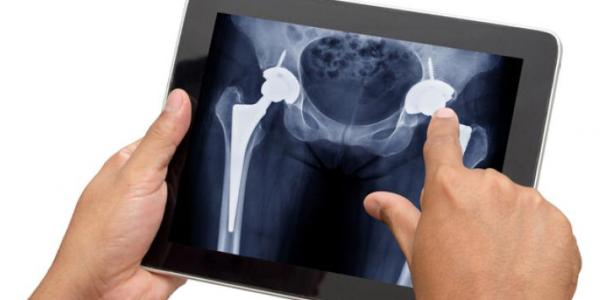


請點擊此轉換成中文
If you're living with hip or knee pain caused by joint degeneration such as arthritis, there's an advanced robotic-assisted surgery approach that lets you move without pain and get back on your feet sooner. Mako Robotic-Arm Assisted Joint Replacement allows your surgeon to customize the procedure to your knee or hip joint. It can be used for total hip and knee replacements, as well as partial knee replacements.
Traditional, nonrobotic-assisted total knee replacement surgery, including computer navigation surgery, uses information from static imaging — such as X-rays, CT scans or an MRI — taken before surgery, which allows us to plan the overall implant and bone alignment.
However, as we only have a static image of your joint, we do not have any data on how your knee joint moves — we can’t predict how the new joint will affect the tension of the surrounding ligaments and tendons.
With Mako robotic technology, we can combine the static imaging data from before surgery with dynamic joint motion data we collect during your surgery to truly customize the procedure to each patient.
Mako Robotic-Assisted Joint Replacement gives surgeons more information during the procedure, which means you get better results. For example, here’s how a knee replacement works:
Because Mako technology gives your surgeon greater precision, you get a more natural-feeling joint. And, because your surgeon can see in advance how a particular cut will affect your joint and surrounding structures, they don't have to make additional cuts to get that balance right. This means less trauma for you during surgery and a faster, more accurate procedure with a more predictable outcome.
Unlike traditional nonrobotic-assisted approaches, Mako procedures require fewer soft tissue releases. This means there’s less pain and a faster recovery. And, because your surgeon can provide a better joint alignment using Mako technology, it can mean you walk more naturally, sooner.
After Mako Robotic-Assisted Joint Replacement, most people can go home the same day as surgery or the next day. You'll get up and walk around, with assistance, the same day as surgery. You'll walk with a walker for a few days or up to a week — mainly for balance. Most people are walking unassisted by the second or third week after surgery. You’ll go through at least six weeks of physical therapy.
Due to advances in pain management techniques during your surgery as well as the Mako procedure itself, patients’ pain is much decreased compared to total knee replacements of years past.
El Camino Health takes a multi-pronged approach to control your pain and lower your narcotic consumption by giving you medicine before surgery and supplementing anesthesia with injections into the knee during surgery. We also encourage spinal anesthesia instead of general anesthesia — spinal anesthesia numbs half of your body, below the waist, and not your central nervous system, like general anesthesia.
This means you have less pain after surgery, with a more comfortable recovery. It’s also associated with decreased complications after surgery including blood clots and infections. The most noticeable thing after surgery is fatigue. Although it’s a less invasive approach, it still takes time for your body to recover. If you have an office job, you can return to work by the third or fourth week after surgery. If you have a physically active job like construction, you may need a few months before returning to work.
If concerns about pain and recovery time were keeping you from considering joint replacement surgery, it’s time to reconsider. Ask your doctor if Mako Robotic-Assisted Surgery is right for you.
Anyone with degenerative joint disease who hasn’t had a joint replacement before is a good candidate for Mako Robotic-Assisted Surgery — this approach isn’t for people who need a previous joint replacement repaired or redone.
Most insurance providers cover the surgery, but you should check with your insurance company to learn about your plan.
El Camino Health offers complete care for joint health, including comprehensive rehabilitation to help you get back on your feet as quickly as possible. Learn more about our joint care services.
This article first appeared in the May 2019 edition of the HealthPerks newsletter.

Identify your risk factors and what to do if you are at risk.